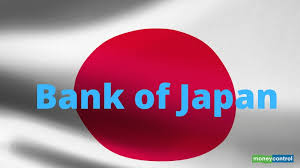
In a surprising move, the Bank of Japan (BOJ) raised interest rates on Wednesday and outlined a comprehensive plan to reduce its large-scale bond purchasing program. This decision marks a significant shift towards unwinding a decade of substantial monetary stimulus.
The BOJ increased its short-term policy rate to 0.25%, up from the previous range of 0-0.1%, marking the highest level since 2008. This decision came despite widespread market expectations that the central bank would maintain its current rate.
The BOJ's board voted 7-2 in favor of the rate hike and also approved a quantitative tightening (QT) strategy, which will cut monthly bond purchases in half to 3 trillion yen ($19.6 billion) by January-March 2026. This move comes as other major economies, like the United States, are leaning towards lowering interest rates, with the Federal Reserve expected to signal a rate cut in September.
BOJ Governor Kazuo Ueda hinted at the possibility of further tightening if economic conditions warranted it. "If the economy and prices move in line with our projection, we will continue to raise interest rates," Ueda stated, emphasizing that the bank does not view 0.5% as a ceiling for future rate increases.
Following the announcement, the yen initially strengthened by 0.8% to a three-month high but later fluctuated in volatile trading. Meanwhile, yields on 10-year Japanese government bonds slightly decreased. Japanese banking stocks rose, boosting the Nikkei index, as higher interest rates are expected to enhance lending margins and investment returns for banks.
Fred Neumann, chief Asia economist at HSBC, noted, "Despite sluggish consumer spending, monetary officials sent a decisive signal by raising interest rates and allowing for a more gradual balance sheet reduction." He added that rising inflation expectations could lead to further normalization of monetary policy by the BOJ, with another rate hike potentially occurring by early next year.
The BOJ's statement highlighted that the rate increase was driven by broadening wage hikes, which are pushing companies to raise service prices to cover higher labor costs. The central bank also expressed concern over accelerating import prices and the risk of inflation overshooting.
The BOJ's quarterly outlook report, released alongside the rate decision, maintained its previous projection that inflation would remain around 2% through fiscal 2026. This decision comes as the Federal Reserve moves towards rate cuts, reversing its previous tightening measures, which had strengthened the dollar and weakened the yen.
Ueda emphasized that the BOJ might further raise rates if sustained wage growth supports services prices and keeps inflation around the 2% target. The central bank aims to adjust short-term rates to a neutral level—neither stimulating nor cooling growth—potentially ranging from 0.5% to 1.5% in the coming years if inflation remains stable at the projected level.
The report also warned that yen fluctuations could have a more significant impact on inflation, as companies are already raising prices and wages. The BOJ acknowledged that the risks to the price outlook are tilted to the upside for fiscal 2024 and 2025, reflecting growing concerns about increasing inflationary pressures.
(Source:www.reuters.com)
The BOJ increased its short-term policy rate to 0.25%, up from the previous range of 0-0.1%, marking the highest level since 2008. This decision came despite widespread market expectations that the central bank would maintain its current rate.
The BOJ's board voted 7-2 in favor of the rate hike and also approved a quantitative tightening (QT) strategy, which will cut monthly bond purchases in half to 3 trillion yen ($19.6 billion) by January-March 2026. This move comes as other major economies, like the United States, are leaning towards lowering interest rates, with the Federal Reserve expected to signal a rate cut in September.
BOJ Governor Kazuo Ueda hinted at the possibility of further tightening if economic conditions warranted it. "If the economy and prices move in line with our projection, we will continue to raise interest rates," Ueda stated, emphasizing that the bank does not view 0.5% as a ceiling for future rate increases.
Following the announcement, the yen initially strengthened by 0.8% to a three-month high but later fluctuated in volatile trading. Meanwhile, yields on 10-year Japanese government bonds slightly decreased. Japanese banking stocks rose, boosting the Nikkei index, as higher interest rates are expected to enhance lending margins and investment returns for banks.
Fred Neumann, chief Asia economist at HSBC, noted, "Despite sluggish consumer spending, monetary officials sent a decisive signal by raising interest rates and allowing for a more gradual balance sheet reduction." He added that rising inflation expectations could lead to further normalization of monetary policy by the BOJ, with another rate hike potentially occurring by early next year.
The BOJ's statement highlighted that the rate increase was driven by broadening wage hikes, which are pushing companies to raise service prices to cover higher labor costs. The central bank also expressed concern over accelerating import prices and the risk of inflation overshooting.
The BOJ's quarterly outlook report, released alongside the rate decision, maintained its previous projection that inflation would remain around 2% through fiscal 2026. This decision comes as the Federal Reserve moves towards rate cuts, reversing its previous tightening measures, which had strengthened the dollar and weakened the yen.
Ueda emphasized that the BOJ might further raise rates if sustained wage growth supports services prices and keeps inflation around the 2% target. The central bank aims to adjust short-term rates to a neutral level—neither stimulating nor cooling growth—potentially ranging from 0.5% to 1.5% in the coming years if inflation remains stable at the projected level.
The report also warned that yen fluctuations could have a more significant impact on inflation, as companies are already raising prices and wages. The BOJ acknowledged that the risks to the price outlook are tilted to the upside for fiscal 2024 and 2025, reflecting growing concerns about increasing inflationary pressures.
(Source:www.reuters.com)





